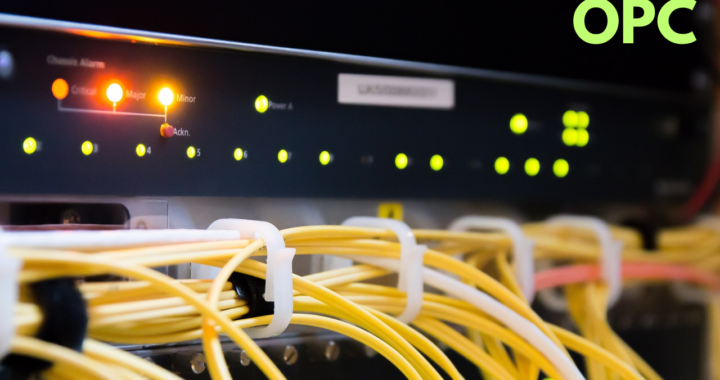In the realm of industrial control systems (ICS), protecting against cyber attacks is paramount. Preventing potential breaches is crucial to avoid dire consequences, from operational disruptions to sensitive data compromise. In this article, we delve into the critical threats faced by ICSs and explore effective strategies to counter them, focusing on SCADA security best practices.

No one wants their industrial control system (ICS) to be the next target of a cyber attack. The consequences of a successful breach can be catastrophic, from disrupting critical operations to compromising sensitive data. To prevent such scenarios, it's essential to identify and address the biggest threats to ICSs
Table of Contents
ToggleThe Internet Connection Conundrum and SCADA security best practices
One of the primary threats to ICSs arises from allowing direct access from the Internet. Attackers often follow a predictable pattern: probing Internet-facing access points to discover vulnerabilities that can be exploited to inject malicious code. This malicious code acts as a conduit, allowing the attacker to move from node to node until they reach their intended target, which might be an ICS node.
Defense Strategies for SCADA security
Demilitarized Zone (DMZ): Establishing a DMZ acts as a buffer between the plant network and the ICS. All traffic to the ICS must pass through this zone, fortified by firewalls with strict rules. This architecture adds a layer of protection, making it harder for attackers to penetrate the ICS directly.
Separate User Domains: Maintaining a clear separation between the plant IT system and the ICS is crucial. Users must have distinct credentials for accessing each domain, preventing malware from exploiting compromised credentials to infiltrate the ICS.
Security Patching and Updates: Keeping both the plant IT system and the ICS updated with the latest security patches and anti-malware updates is essential. These measures address known vulnerabilities and protect against malicious software.
SCADA security best practices: Countering Remote Access Attacks
Remote access attacks involve infected authorized workstations or laptops accessing the ICS through a secure connection. To counter this threat, a multi-layered approach is recommended:
Secure Connection via DMZ: Instead of a direct connection to the ICS, remote devices establish a secure connection to the DMZ. From there, a separate connection is made to the ICS. This two-step process adds an additional barrier against unauthorized access.
Temporary Credentials: Remote users should provide short-lived, unique credentials for accessing the ICS. This prevents malware from stealing and reusing credentials.
Firewall Restrictions: Firewalls should be configured to allow access only from authorized workstations at specified times.
Mitigating Portable Media Threats
Attackers often exploit portable media, such as USB drives and SD cards, to introduce malware into the ICS environment. To counter this threat:
Lockdown Ports: Keep portable media ports locked at all times. If necessary, unlock them for authorized use for limited periods.
Scanning and Authorization: Scan portable media for malware before use. Only approved media should be allowed. Users should not use personal portable media.
Firewall Configuration: Configure firewalls to prevent malware from establishing outbound communications.
The Disgruntled Employee Factor
Disgruntled employees pose a unique challenge, as they possess legitimate access. Countermeasures include:
Access Restriction: Limit employees' access to only the resources necessary for their roles.
Account Management: Regularly update user accounts. Disable, delete, or modify accounts when employees' status changes.
Dual Authorization: Implement dual authorization for sensitive operations, requiring a second person's approval.
User Access Control (UAC): Utilize UAC to require elevated privileges for sensitive operations.
Logging and Intrusion Detection: Notify employees that security actions are logged. Employ intrusion detection systems to alert administrators about suspicious activities.
Emerson NextGen Smart Firewall for SCADA security best practices
By considering above points “Emerson NextGen Smart Firewall” offers streamlined and easily comprehensible setup menus that anyone can effortlessly manage in DCS. There are many advanced firewalls available in market but we are focusing on ICS only and here we will discuss the feature of Delta V DCS & SCADA firewall developed by Emerson.
Effortless Control for DeltaV™ Support Personnel
The Emerson NextGen Smart Firewall empower DeltaV™ support personnel to effectively manage perimeter security for the DeltaV system.
Enhanced Security through Dynamic Port Mapping
For classic OPC-based communications, the Emerson NextGen Smart Firewall offers dynamic port mapping, significantly enhancing the security of your perimeter.
Seamless Integration with DeltaV™ Network Device Command Center
The DeltaV™ Network Device Command Center facilitates integration by incorporating hardware status updates directly into the DeltaV alarm system. Stay informed, stay secure.
Meeting and Exceeding Security Standards
In a world of evolving security standards, staying compliant is non-negotiable. The Emerson NextGen Smart Firewall not only aligns with emerging security standards but also does so economically and with remarkable ease.
Blog update regarding ISA 99
The ISA 99 standard, also known as ISA/IEC 62443, is a comprehensive framework developed to address the cybersecurity challenges specific to industrial automation and control systems (IACS). These systems are prevalent in various critical infrastructure sectors such as manufacturing, energy, utilities, transportation, and more. Unlike traditional IT systems, IACS are often comprised of interconnected devices, sensors, controllers, and networks that control and monitor physical processes. Securing these systems is essential to prevent cyber threats that could result in operational disruptions, safety hazards, or damage to equipment.
ISA 99 provides a structured approach to cybersecurity for IACS, encompassing a wide range of processes and requirements throughout the lifecycle of these systems:
1. Risk Assessment: The standard emphasizes the importance of conducting comprehensive risk assessments to identify potential cybersecurity threats, vulnerabilities, and impacts on IACS assets and operations. This includes analyzing the likelihood and consequences of cyber incidents.
2. Security Policies and Procedures: ISA 99 outlines the need for establishing robust security policies and procedures tailored to the unique requirements of IACS environments. This includes defining roles and responsibilities, access controls, data protection measures, and security awareness training for personnel.
3. Network Segmentation: To mitigate the spread of cyber threats within IACS networks, ISA 99 recommends implementing network segmentation strategies to isolate critical assets and control systems from less secure areas. This involves dividing the network into separate zones and implementing security controls to regulate traffic flow between them.
4. Access Control: Controlling access to IACS assets and systems is crucial for preventing unauthorized users or malicious actors from tampering with critical processes or data. ISA 99 provides guidelines for implementing access control mechanisms, including authentication, authorization, and accountability measures.
5. Secure Development and Implementation: The standard emphasizes the importance of incorporating cybersecurity considerations into the design, development, and implementation of IACS components and software. This involves adhering to secure coding practices, performing security testing, and integrating security features into industrial devices and applications.
6. Incident Response and Recovery: ISA 99 outlines procedures for effectively detecting, responding to, and recovering from cybersecurity incidents affecting IACS. This includes establishing incident response plans, incident reporting mechanisms, and contingency measures to minimize the impact of cyber incidents on operations.
7. System Resilience and Continuity: To ensure the resilience and continuity of IACS operations in the face of cyber threats, ISA 99 encourages the implementation of redundant systems, backup and recovery mechanisms, and disaster recovery plans. This helps mitigate the effects of cyber incidents and maintain operational integrity during disruptions.
ISA 99 is continuously evolving to keep pace with emerging cybersecurity threats and technologies, providing organizations with guidance and best practices to strengthen the security posture of their industrial control systems. Compliance with ISA 99 helps organizations demonstrate due diligence in safeguarding critical infrastructure assets and fulfilling regulatory requirements related to cybersecurity.
Conclusion
Safeguarding industrial control systems necessitates a holistic approach. By adopting SCADA security best practices such as DMZ deployment, distinct user domains, consistent updates, and robust access controls, organizations can considerably reduce risks. Addressing challenges from Internet exposure, remote access, portable media threats, and internal vulnerabilities is pivotal for enhancing ICS security. As threat landscapes evolve, ongoing security measures should be guided by comprehensive cybersecurity threat assessments.
References:
https://www.emerson.com/en-in/news/2023/05-new-nextgen-smart-firewall-for-deltav-systems



